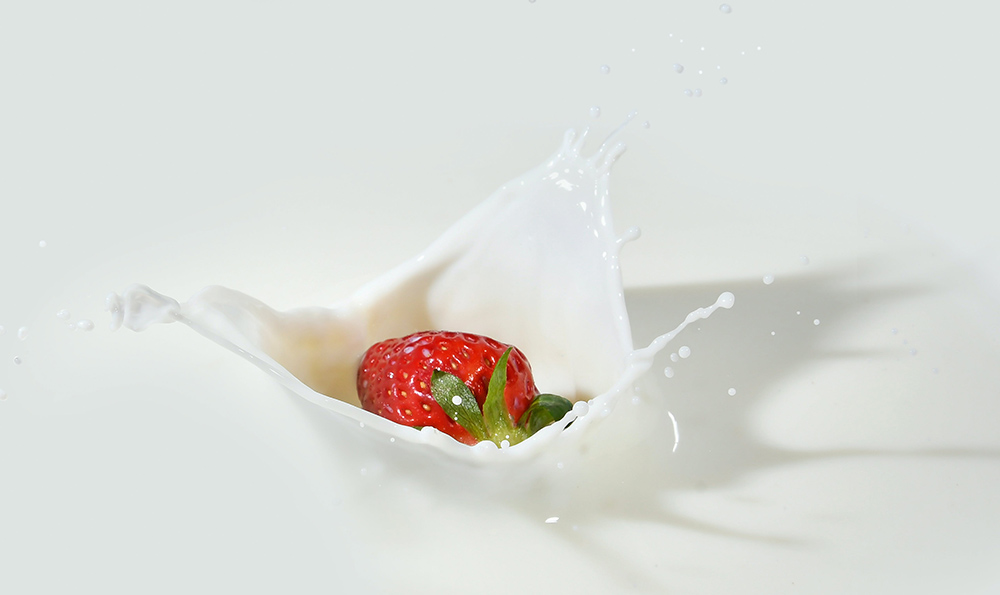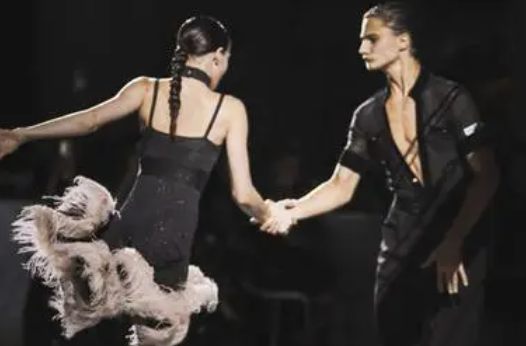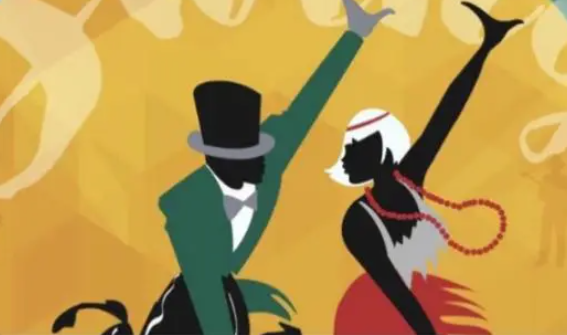拉丁舞的移动步,拉丁舞的移动步法
导读:拉丁舞的移动步是拉丁舞蹈中至关重要的一部分,它不仅展现了舞者的技巧和灵活性,还传达了舞蹈的情感和魅力。本文将详细介绍拉丁舞的移动步法,并探讨其在舞蹈行业中的重要性。让我们
拉丁舞的移动步是拉丁舞蹈中至关重要的一部分,它不仅展现了舞者的技巧和灵活性,还传达了舞蹈的情感和魅力。本文将详细介绍拉丁舞的移动步法,并探讨其在舞蹈行业中的重要性。
让我们来了解一下拉丁舞的起源和发展。拉丁舞起源于拉丁美洲地区,包括桑巴、恰恰舞、伦巴舞等多种舞蹈风格。这些舞蹈都以快速的音乐节奏、动感十足的舞步和独特的身体动作为特色。正是这些独特的移动步法,使得拉丁舞在全球舞蹈界中独树一帜。
我们将详细介绍拉丁舞的几种主要移动步。齐步。齐步是拉丁舞中最基础的步法之一,舞者将两脚并拢,然后迈出一步,再将脚合拢。这种步法简单明了,适合初学者练习。
侧步。侧步是拉丁舞中非常常见的步法,舞者将一只脚向侧边迈出,再将另一只脚追随着迈出。这种步法可以展现舞者的优美身姿和灵活性。
再次是旋转步。旋转步是拉丁舞中最具挑战性的步法之一,舞者需要以快速而流畅的方式旋转身体,并配合音乐的节奏进行舞动。这种步法要求舞者具备良好的平衡能力和身体控制力。
拉丁舞还包括很多其他的移动步法,如后退步、前进步、跳跃步等。每种步法都有其独特的特点和技巧,需要舞者不断练习和提高。
为什么拉丁舞的移动步是如此重要呢?拉丁舞的移动步可以展示舞者的技巧和灵活性,给观众留下深刻的印象。移动步法能够传达舞蹈的情感和表达力,使舞者能够更好地与观众产生共鸣。良好的移动步法可以提高舞者的整体舞蹈水平,使其在舞台上更具竞争力。
拉丁舞的移动步是一门独特而重要的艺术形式。它不仅展现了舞者的技巧和灵活性,还传达了舞蹈的情感和魅力。我们应该重视并深入研究拉丁舞的移动步法,为舞蹈行业的发展做出贡献。
以上是本文对于“拉丁舞的移动步,拉丁舞的移动步法”的相关内容的介绍和论述。希望能够给读者带来对拉丁舞的更深入了解,并进一步推动舞蹈行业的发展。
拉丁舞的移动步法——舞出热情与魅力
引言:你是否曾被拉丁音乐的热情所吸引?你是否想学习一种能展现自己魅力的舞蹈?本文将介绍拉丁舞的移动步法,带你走进这个充满活力和魅力的舞蹈世界。

目录:
1. 拉丁舞的魅力与特点
2. 基本步法——舞出动感与节奏
3. 高级步法——展现技巧与协调性
4. 舞会中的衍生步法——与伙伴热情互动
5. 总结与展望:走进拉丁舞,舞出自己的活力与自信
拉丁舞的魅力与特点
拉丁舞起源于中南美洲,充满了热情、动感和节奏感。它通过肢体的协调与舞蹈动作的表达,展现出舞者的魅力与自信。不论是在舞台上还是派对中,拉丁舞都能吸引众多人群的目光,成为独特的舞蹈艺术形式。
基本步法——舞出动感与节奏
在学习拉丁舞的过程中,掌握基本步法是必不可少的。恰恰舞、桑巴舞、牛仔舞等,都是常见的基础步法。这些步法通过快速的脚步、髋部的摆动和躯体的协调,使舞者能够跳出动感的舞姿,与音乐的节奏相契合。
高级步法——展现技巧与协调性
除了基本步法外,拉丁舞还有一些更具挑战性的高级步法,如伦巴舞、探戈舞和弗拉门戈等。这些步法要求舞者在跳舞的时候展现出更高的技巧和协调性。通过身体的灵活性、速度变化和舞步的转换,舞者能够完美地呈现出拉丁舞的热情与魅力。
舞会中的衍生步法——与伙伴热情互动
拉丁舞通常是一种与伙伴共舞的舞蹈,舞会中的衍生步法更加注重舞伴的互动。巴赞薩舞、锡尔博勒斯舞等,通过舞伴间的身体接触和动作的合作,增强了舞蹈的互动性和情感表达,让舞蹈更具情感和魅力。
总结与展望:走进拉丁舞,舞出自己的活力与自信
通过学习和掌握拉丁舞的移动步法,你可以展现出自己的活力与自信,舞出独特的魅力。不仅能够在派对中尽情释放自己,还可以参加舞蹈比赛、演出等活动,展现个人的舞技和魅力。拉丁舞不仅是一种舞蹈艺术,更是一种生活态度,让我们在舞动中享受快乐与自信。
通过深入了解拉丁舞的移动步法,我们可以发现其独特的魅力和吸引力,同时也能了解到学习拉丁舞对提升个人魅力和塑造自信的重要性。无论是初学者还是舞蹈爱好者,都可以通过学习和掌握拉丁舞的移动步法,舞出自己的热情与魅力,展现个人风采。让我们一起跳入拉丁舞的世界,释放自己的热情与激情!
拉丁舞的移动步法有哪些
Title: Unveiling the Moves in Latin Dance: An Exploration into Different Dance Steps

Introduction:
Are you ready to immerse yourself in the world of Latin dance? In this industry article, we will delve into the captivating and vibrant world of Latin dance, specifically focusing on the various move techniques that make this dance form so unique and mesmerizing. Through the use of compelling data, anecdotes, and questions, we aim to captivate the readers' attention and provide them with valuable insights about Latin dance.
Main Content and Structure:
I. Introduction to Latin Dance
A. Overview of Latin dance's cultural significance
B. Brief history and evolution of Latin dance
II. Basic Moves in Latin Dance
A. Footwork and hip movement
B. Synchronization and partnering
C. Rhythm and musicality
III. Popular Latin Dance Styles and Their Distinct Moves
A. Salsa: Cross-body lead, shines, and spins
B. Bachata: Side-to-side steps, hip movements, and sensual body isolations
C. Cha-cha-cha: Forward and backward movements, chassés, and syncopated steps
D. Merengue: Simple marching steps, turns, and partnering
IV. Advanced Techniques and Challenging Moves
A. Incorporating intricate footwork patterns
B. Lifts, dips, and acrobatics in Latin dance
C. Styling and body movements
V. The Importance of Technique and Practice in Mastering Latin Dance Moves
A. The significance of proper posture and body alignment
B. The role of muscle memory and consistent practice
C. Benefits of taking professional Latin dance classes
VI. Conclusion and Implications
A. Recap of the main points discussed
B. Emphasizing the value and impact of Latin dance in the dance industry
C. Encouraging readers to explore Latin dance and reap its benefits
Persuasive Techniques:
To establish a connection with the readers and foster consensus, the use of rhetorical questions throughout the article will engage readers' attention. The author will present themselves as a knowledgeable commentator who shares the readers' perspective.
The author will provide a sense of wisdom and authority by using rhetorical questions to analyze the events. This demonstrates the author's ability to think critically and make informed judgments.
To add a personal touch and charisma, the author will incorporate relevant emphasizing sentences, showcasing an independent perspective and attitude towards the topic.
In order to maintain a sense of rationality and fairness, the author will use relevant questioning sentences to challenge certain aspects of the topic, indicating a logical thinking process and a critical mindset.
Conclusion:
In conclusion, Latin dance is a captivating and dynamic art form that encompasses a variety of unique moves and techniques. By presenting a comprehensive exploration of the different dance steps characteristic of Latin dance, this article aims to ignite readers' interest in the world of Latin dance and highlight its value and significance. So why wait? Embrace the rhythm, let your body move to the vibrant beats, and embark on a journey into the mesmerizing world of Latin dance!


















